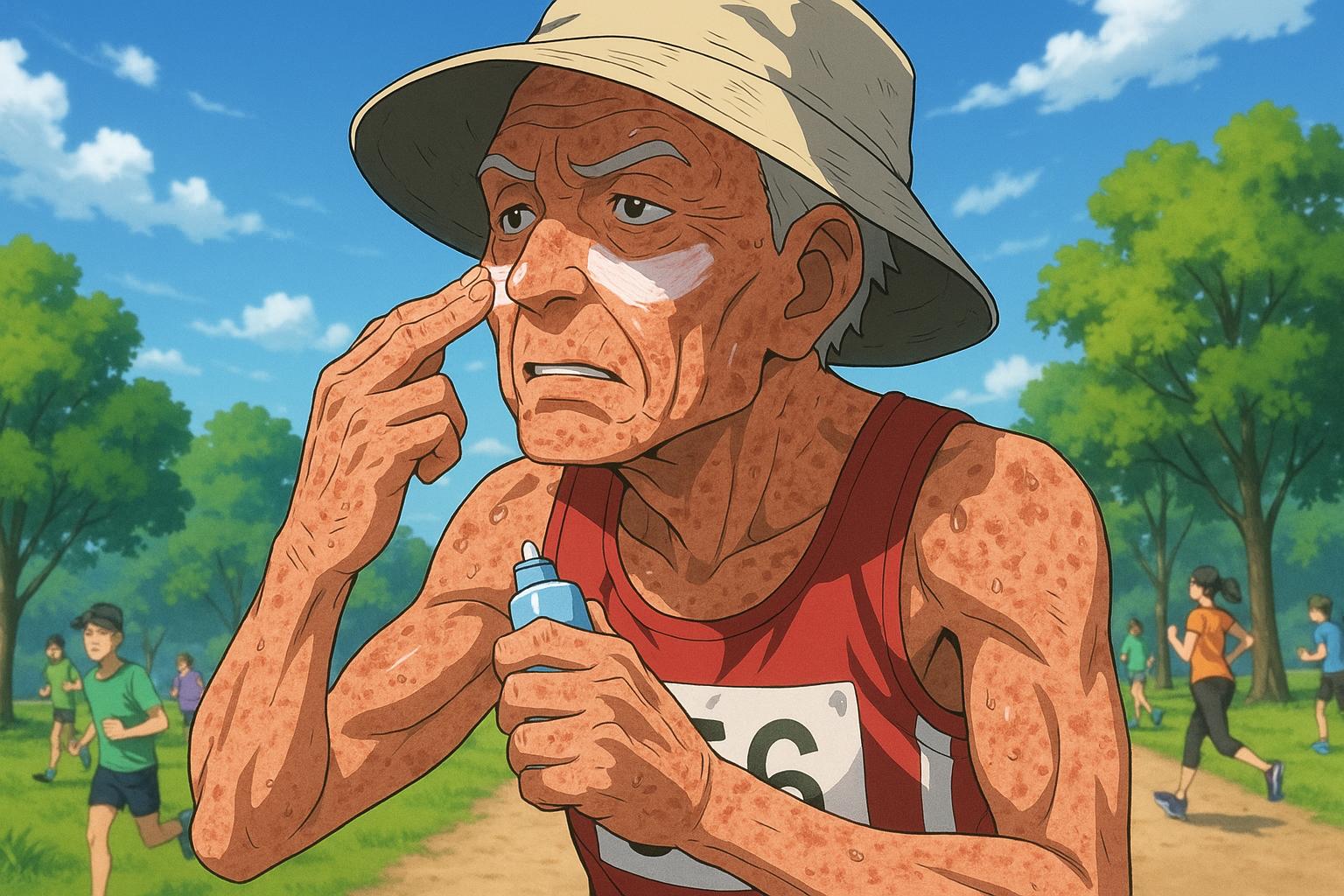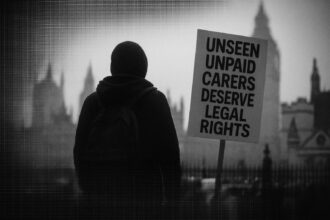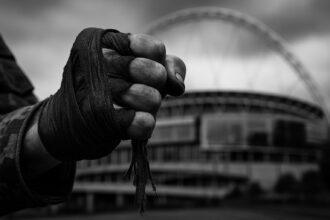Eric Montgomery, a 68-year-old Waterworks Parkrun volunteer in Belfast, has raised urgent awareness of sun protection after his diagnosis with actinic keratosis, sharing his painful treatment experience to encourage runners to prioritise suncream and UV safety.
A seasoned runner from Glengormley, Eric Montgomery, has recently ignited a crucial conversation about sun safety within the running community following his diagnosis of actinic keratosis, a condition linked to prolonged sun exposure. The 68-year-old has been a cherished figure at the Waterworks Parkrun in Belfast, where he has volunteered and participated since its inception 15 years ago. This past Saturday, he not only marked the 700th event but also returned as run director just days after completing a tough three-week treatment programme that left his face visibly raw and inflamed.
In a candid Facebook post that quickly gained traction among the Parkrun community, Eric shared his experience alongside a photo highlighting the severity of his condition, urging others to prioritise sun protection. He advised, “Please, always slap sun cream on your gob,” reflecting both his humour and the gravity of his message. Actinic keratosis, colloquially known as solar keratosis, manifests as rough, scaly patches on the skin and serves as a potential precursor to skin cancer if left untreated, particularly affecting older individuals and those who lack adequate UV protection.
Eric’s journey with this condition started more than a year ago, when he noticed dry skin around his eyes, which his wife urged him to address. Despite trying various moisturisers, the situation worsened, culminating in crusty spots on his cheek that led him to seek medical advice. Upon diagnosis, the consultant described his condition as a “warning of something worse,” likening it to angina. This analogy certainly resonated with Eric, instilling a sense of urgency to remedy the situation.
The treatment he underwent involved applying a potent cream to his face daily, designed to target both visible and hidden sun damage. As the treatment progressed, Eric experienced an accumulation of discomfort, likening the latter stages to the worst sunburn imaginable. Despite this, he remained dedicated to his Parkrun duties, famous for his enthusiasm and habit of breaking into original songs during the morning greetings to foster community spirit.
The history of the Waterworks Parkrun is noteworthy as it was the first of its kind in Ireland when it commenced in November 2010. With an average participation of 250-300 runners each week, Eric’s story has resonated widely, garnering significant attention and sparking essential discussions about sun safety in the running community. His honesty has encouraged many individuals to share their own experiences with skin conditions and the lack of awareness surrounding sun protection, especially in regions like Belfast where such precautions are often overlooked.
Recent studies highlight a concerning gap in sun safety knowledge among athletes, indicating that while some runners take protective measures, many do not, primarily due to a lack of awareness. The American Academy of Dermatology stresses the importance of daily sunscreen use, recommending broad-spectrum products with an SPF of 30 or higher and the use of protective clothing. Additionally, the World Health Organization underscores that UV damage is largely avoidable, and implementing strategies like seeking shade during peak hours can significantly reduce the risk of skin conditions.
Eric’s own revelations about his sun protection habits, particularly following a recent trip to Tenerife where he donned a wide-brimmed hat and used high-factor sunscreen for the first time, reflect a widespread issue. His commitment to educating others is commendable, stating, “If it gets people thinking about sun protection, then it’s worth it.” Going forward, Eric intends to make a personal change, sporting his baseball cap front-facing rather than backwards, with sunscreen as a steadfast companion.
In a community that values participation over competition, Eric’s story serves as a poignant reminder of the importance of taking proactive measures against sun damage, reinforcing the call for awareness and education to protect not just athletes but everyone who spends time outdoors.
 Reference Map:
Reference Map:
Source: Noah Wire Services
- https://m.belfasttelegraph.co.uk/news/northern-ireland/many-runners-dont-think-about-sun-cream-belfast-parkrun-director-speaks-of-painful-skin-condition/a1435360524.html – Please view link – unable to able to access data
- https://www.aad.org/public/diseases/skin-cancer/actinic-keratosis-self-care – This article from the American Academy of Dermatology provides comprehensive self-care guidelines for individuals with actinic keratosis (AK). It emphasises the importance of daily sunscreen use, recommending broad-spectrum sunscreens with an SPF of 30 or higher, and advises reapplication every two hours. The piece also highlights the significance of protective clothing, such as wide-brimmed hats and sunglasses, and suggests seeking shade during peak sun hours. Regular skin self-exams and keeping dermatology appointments are also recommended to monitor skin health and detect any changes early.
- https://pubmed.ncbi.nlm.nih.gov/26999653/ – This study, published in the Journal of the European Academy of Dermatology and Venereology, assesses ultraviolet radiation (UVR) protection and skin cancer awareness among recreational athletes. Conducted during a major running event in Switzerland, the survey revealed that UVR protection habits among participants varied based on age, gender, skin type, and personal history of skin cancer. The findings suggest that while some athletes are proactive about sun protection, there is a need for enhanced education and awareness to improve protective behaviours across the athletic community.
- https://pmc.ncbi.nlm.nih.gov/articles/PMC3445124/ – This article from the National Center for Biotechnology Information discusses the risks of ultraviolet (UV) radiation exposure for athletes and the importance of sun protection. It highlights that regular daily sunscreen use can decrease the risk of actinic keratoses and squamous cell carcinoma. The piece also notes that while sunscreens are regulated by the FDA, they should be applied generously and reapplied every 2 to 4 hours or after sweating, swimming, or towel drying to ensure continuous protection against harmful UV rays.
- https://www.who.int/news-room/questions-and-answers/item/radiation-protecting-against-skin-cancer – The World Health Organization’s article addresses the risks of ultraviolet (UV) radiation and provides guidance on protecting against skin cancer. It explains that UV damage is largely avoidable and that overexposure to UV radiation is a significant cause of skin cancers. The piece offers practical advice, such as limiting time in the midday sun, using shade wisely, and wearing protective clothing like wide-brimmed hats and sunglasses. It also highlights the importance of monitoring the UV Index to plan outdoor activities safely.
- https://en.wikipedia.org/wiki/Actinic_keratosis – This Wikipedia entry provides an overview of actinic keratosis (AK), a pre-cancerous condition induced by ultraviolet (UV) light exposure. It describes AK as rough, scaly, or crusty skin areas that can develop into squamous cell carcinoma if left untreated. The article outlines preventive measures, including limiting sun exposure, avoiding peak sun hours, using sun protection like broad-spectrum sunscreens with SPF 30 or higher, and wearing protective clothing. It also mentions the importance of regular skin self-exams and dermatology appointments for early detection.
- https://www.ncbi.nlm.nih.gov/books/NBK519527/ – This chapter from the NCBI Bookshelf discusses skin cancer prevention strategies, focusing on the role of sun protection. It emphasises the use of clothing made of fabrics that do not permit sunlight passage and recommends wearing items with ultraviolet protection factor (UPF) ratings. The chapter also highlights the importance of using broad-spectrum sunscreens with appropriate SPF ratings, applying them 20 to 30 minutes before sun exposure, and reapplying every 90 minutes. It advises against tanning and suggests seeking shade during peak sun hours to reduce skin cancer risk.













